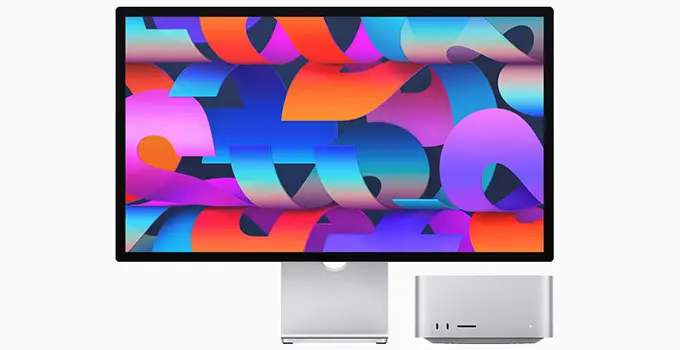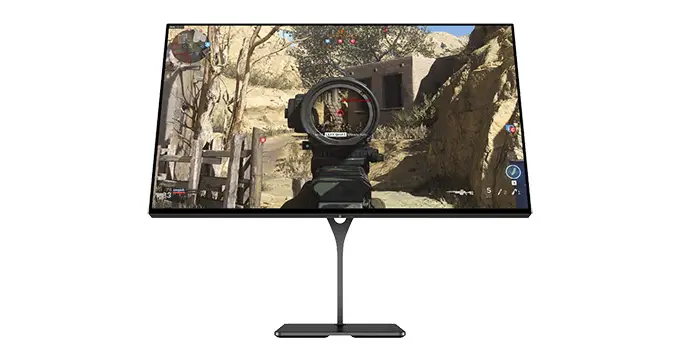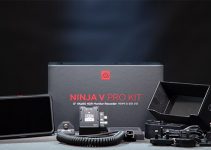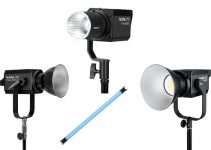Apple makes nice products. They put a lot of energy into good design and making sure that their products work extremely smoothly. That does result in expensive items though. One example of this is with their new Studio Display.
It’s certainly a nice display if not all that groundbreaking with its features. However, the high price does mean there is some steep, potentially better, competition out there – like the Eve Spectrum 4K Monitor.
Considering the Eve Spectrum comes it at the same 27” size and has some specs that actually exceed that of the Studio Display it is an interesting option. For more information, tech enthusiast Jerry Schulze did a comparison of the two.
A good place to start is design since it is core to Apple products and if you are here you are likely considering that as part of your decision making. The two here are the standard Eve display with stand the the Apple height-and-tilt adjustable stand. These two displays look very different.
The Eve Spectrum has a sleek all-black plastic construction with a two-piece metal stand. There are also some nice, slim bezels. It is fairly unassuming and will blend in to most setups.
The Studio Display has a silver aluminum body with silver stand. It stands out a bit but meshes perfectly with the Mac Studio. In terms of depth, the Studio Display does beat out the Spectrum. However, the Studio Display has some thicker bezels.
As for adjustments, the Apple stand does have smoother movements that will help you get the display positioned just right. It is also more stable than the Eve stand and doesn’t wobble nearly as much when the desk is bumped.

Image Credit: Apple
Power is a notable difference since the Studio Display has an integrated power supply. There is also a non-removable cable which is annoying. Eve opted for an external power brick which could be a nuisance.
Display spec difference are a big comparison point and perhaps the most important. The Eve Spectrum has a 27” 4K panel with 163 ppi, 144 Hz refresh rate, 450-nit max brightness, and P3 wide color with HDR support. The Studio Display hits 5K, 60 Hz, P3 wide color, and True Tone support.
They are very different.
5K versus 4K doesn’t seem like a huge difference but you can see that the 5K “Retina” display is sharper. Scaling matters here and going with a Full HD scaling will help the Eve.
For motion the Eve pulls clearly ahead as 144 Hz is a huge bump up. For gaming and just general motion on screen things will just feel smoother. The 60 Hz on the Studio Display isn’t bad, it’s just not as good.
One interesting area to test is in HDR imagery. The Eve has true HDR support while the Studio Display does not. In a side-by-side comparison you can see that the Spectrum is pulling off more detail and dynamic range. It also has 16 local dimming modes to help achieve this effect. That isn’t too many though so you can see some blooming around point light sources in dark scenes.

Image Credit: Eve Devices
Now, Apple may not have supported true HDR, but this has given them an advantage in consistent quality. The Eve occasionally lost details and such while the Apple display mapped things much more nicely. The Apple’s display is a very, very nice SDR.
On to connectivity. The Studio Display is simple with a single Thunderbolt bolt for connecting to the PC and three 10Gb/s USB-C ports for accessories. The Eve Spectrum has one DisplayPort 1.4, two HDMI 2.1, a 10Gb/s USB-C, two 10Gb/s USB-A ports, a USB-B port for PC connection, and a headphone jack.
Both will power up a laptop or tablet via the connection. They are essentially the same power output at just around 100W.
Where the Apple does have some unique features is with the integrated webcam, microphone, and speakers. It also gels with macOS for using keyboard shortcuts to control brightness and volume. It will also support content that is protected with HDCP.
The Spectrum wins when it comes to gaming by far with support for things like G-Sync.
This might all not even matter once you look at price. The Eve Spectrum comes it at $800 plus another $100 for the stand. The equivalent Studio Display with height-and-tilt adjustable stand will run you $2,000. That’s a lot more and may not be worth it for most. There are some other options for both, such as a matte screen, for a bit more cash.
The last bit to discuss is support and availability. Apple has a long track record of supporting products well and when you order you will certainly receive it in a few months. Eve on the other hand has had some fumbles in the past. Plus, if you have any issues the process for repairs and fixes is going to be a problem. Jerry even had an issue with a broken power button and hasn’t gotten a clear response yet.
Apple does offer benefits for the premium, including simplicity of sticking with the ecosystem.
Which display would you pick up?
[source: Jerry Schulze]
Order Links:
- Apple Studio Display (B&H)
- Eve Spectrum 4K Monitor (Eve Devices)
Disclaimer: As an Amazon Associate partner and participant in B&H and Adorama Affiliate programmes, we earn a small comission from each purchase made through the affiliate links listed above at no additional cost to you.
Claim your copy of DAVINCI RESOLVE - SIMPLIFIED COURSE with 50% off! Get Instant Access!




